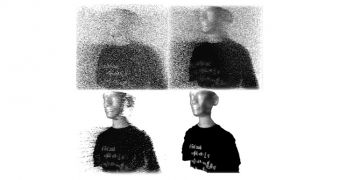You'd think that a 3D scanning technology that can suddenly create high-resolution models of objects even in the absence of light would need some new sort of laser or photon detector, but that's not the case here.
Instead, researchers from MIT were able to come up with a new algorithm that could pick out variations in the time it takes for photons (from laser pulses) to be reflected from the object when using a normal photon detector.
The pulses fired at the given location didn't really need to be high. Indeed, low-intensity photons were essential here, but that's what normal, off-the-shelf photon detectors exist for.
You may start betting pools regarding what type of spy tool this will be used in first.
Software had to be used to eliminate “noise” of course, this leading to the high resolution, all based on a single million photons, instead of the several hundred trillions that would have been needed when trying to recreate the process with a mobile phone camera.

 14 DAY TRIAL //
14 DAY TRIAL //